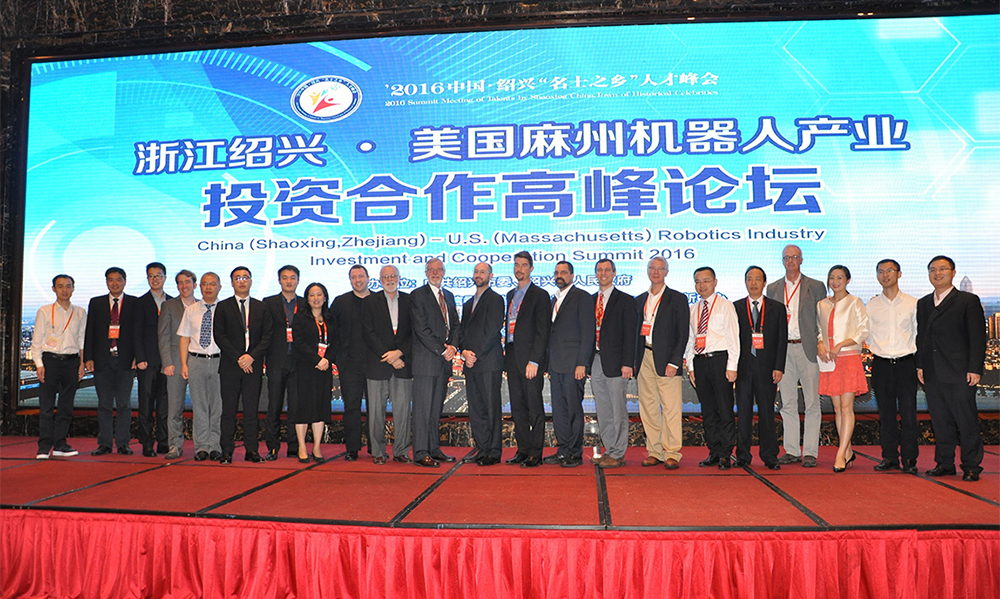
I just returned from a trip to China with executives from ten Massachusetts robotics companies. We visited five large cities; Foshan, Guangzhou, Shenzhen, Shaoxing and Beijing, during our ten day visit. The trip was sponsored by the Guangdong provincial government and InTeaHouse of Cambridge. It was very well organized and our days were packed. We started with a quick breakfast buffet, then a bus trip to see 2 to 4 robot companies, a group lunch, and a big summit or seminar where we all gave short presentations to a crowd of between 100 and 200 people. This was followed by a networking/match-making session, a ceremonial cooperation-treaty signing, and then a big dinner – often including local politicians (mayors, federal government officials, developers, luminaries.) Then off to the airport for the next city.

The trip was eye-opening and now that I have had a chance to reflect on my visit here are some of my impressions:
China is growing faster than can be imagined. To see it is the only way to comprehend it. The economy is highly energized, with construction cranes everywhere you look. They are developing industrial clusters through industrial planning and building public innovation platforms. For example in Guangzhou they have built the Guangzhou Science City, Sino-Singapore Knowledge City, and Guangzhou Bio-island.
China’s robotics industry is transitioning from a follower to a frontrunner and it is exploding. While their technology is 10 years behind ours they are determined to rapidly close the gap. Thousands of companies have been established in dozens of robot specific industrial parks across China, with the number of employees growing rapidly. We visited a few of these parks, such as the South China Robotics Innovation Research Institute (SCRI) in Foshan and the E-Town Robot Innovation Park in Beijing. I was impressed at the investments that are being made in the field.
The government has a “robots replace humans” initiative. They are embracing robots as a solution to what they are seeing as challenges to their economy – high labor costs, factories shutting down because they can’t hire enough workers and an aging population.
Asia has become the world’s largest supplier of industrial robots, taking up 60 percent of the global market and China’s robot shipments topped 68,000 units last year, accounting for 26.7 percent of the global market. In the last year roughly one-third of industrial robots used in China were manufactured domestically, and the percentage is climbing. Similar to our U.S. RIME-MII program, the National Natural Science Foundation of China just announced plans to invest 200 million yuan ($29.5 million) to support the study of the basic theory and key technologies of robots that can work alongside people.
Service robots are also becoming a major field of development in China. Companies are focusing on areas such as firefighting, disaster relief, healthcare, coal mining, power generation, oil exploitation, anti-terrorism, criminal, explosives handling and food service and are developing product at an outstanding rate. According to an IFR report, an estimated 94,800 professional service robots will be installed from 2013 to 2018, with total sales of $17.1 billion.
The Chinese are very proud of their cross-border mergers and acquisitions in the robot industry. In April, Wanfeng Technology Group acquired US industrial robot manufacturer Paslin, giving Wanfeng access to advanced automated welding technology and clients that Paslin has developed over 80 years and Midea Group offered to buy Kuka for about $5 billion.
The people we visited could not be more open, generous, or welcoming. They view robotics as their future and are anxious to learn all they can. The Chinese have ambitious talent acquisitions plans and the government is making large investments in the field. I am excited that we had the opportunity help introduce some of our robotics companies to the market potential and I am interested to see what develops.
Tom Ryden, MassRobotics Executive Director






